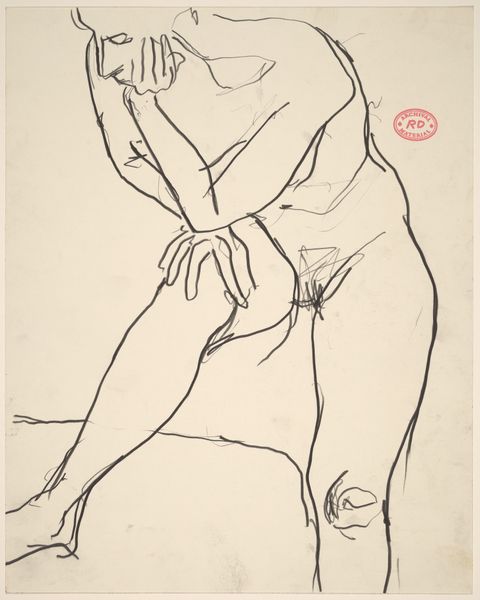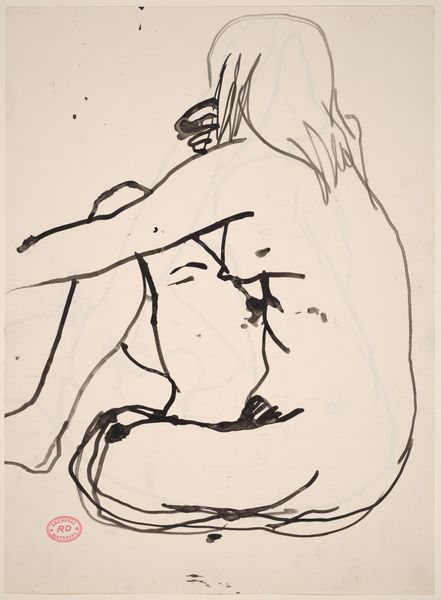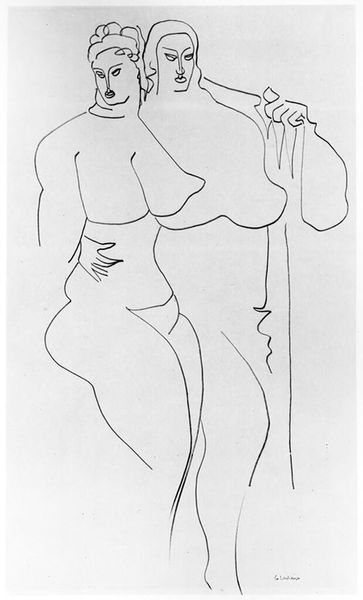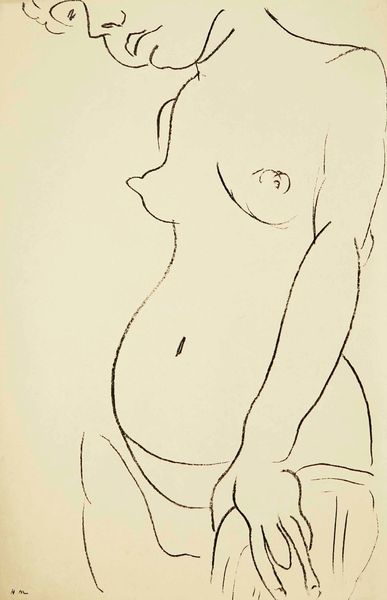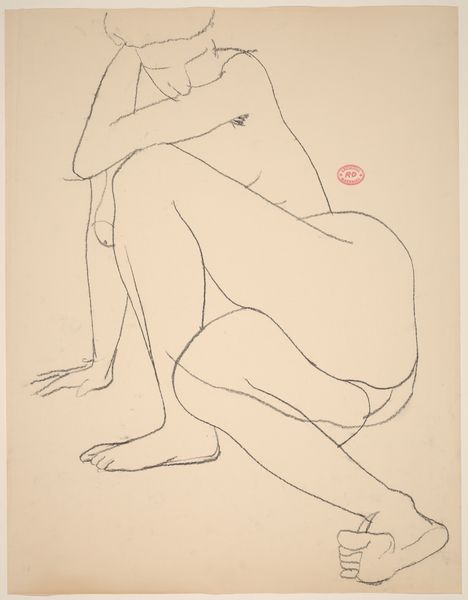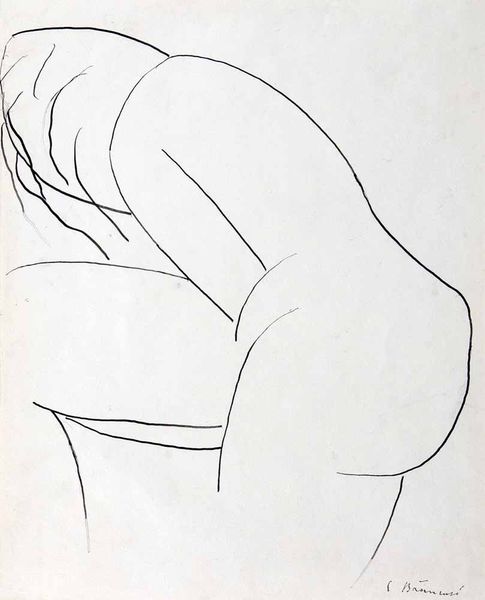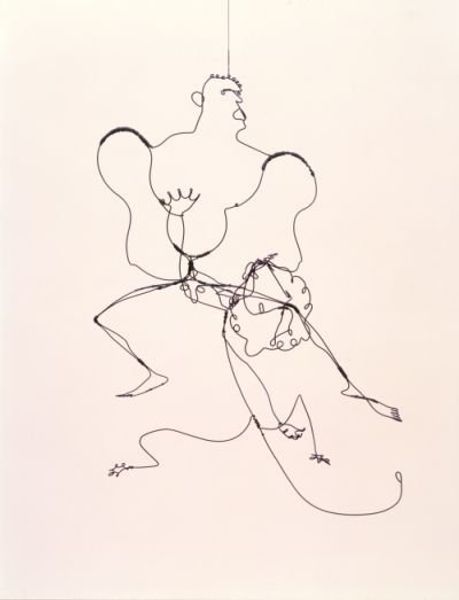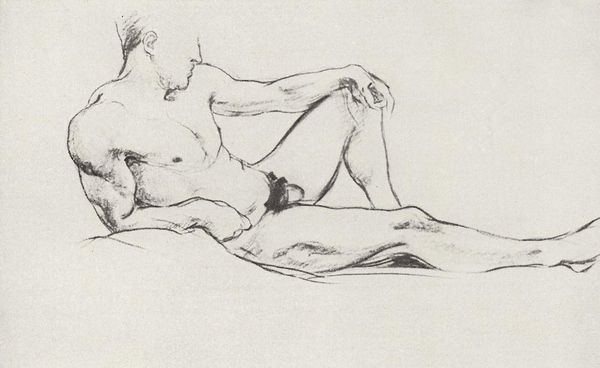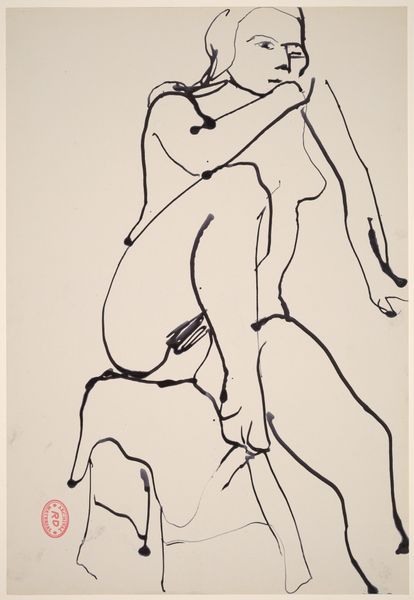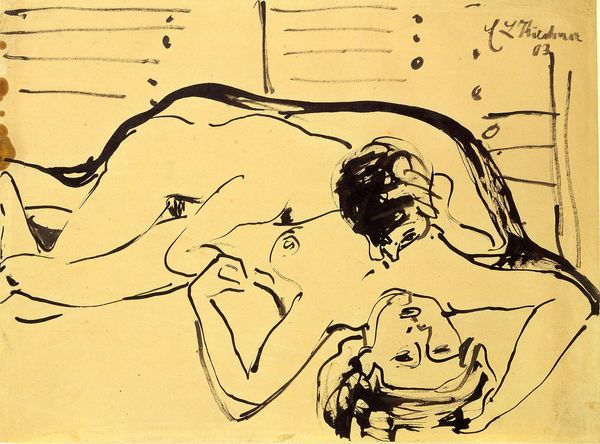
drawing, ink
#
abstract-expressionism
#
drawing
#
organic
#
figuration
#
ink
#
line
#
nude
Dimensions: overall: 69.8 x 109.2 cm (27 1/2 x 43 in.) framed: 73.6 x 113 x 5 cm (29 x 44 1/2 x 1 15/16 in.)
Copyright: National Gallery of Art: CC0 1.0
Editor: Here we have David Smith's "Untitled" from 1964, rendered in ink. It's an arresting piece, very gestural. The figure, perhaps a nude, is only suggested. What do you see in this work, beyond the initial image? Curator: What I find compelling is the overtness of the *making*. The splashed ink, the quick, almost careless lines… these choices become the content. Smith isn't just representing a nude; he's showing you the very act of creating the nude. It becomes less about idealization and more about process, the artist's labor laid bare. How do you think this contrasts with more academic nudes? Editor: Well, academic nudes focus on realistic depictions of the human form, whereas this drawing emphasizes the materiality of ink and the artist’s immediate expression. The act of creation seems almost as important as the figure itself. It brings attention to art-making as *work*, rather than divine inspiration. Curator: Precisely. It questions that hierarchical divide, doesn’t it? This blurring is intentional. Think about Smith's sculpture work; it embraces industrial materials and processes. The drawing, though on paper, shares a similar ethos. It pushes against traditional artistic boundaries, asking us to consider art as something made, constructed, and consumed, rather than just passively admired. How does that understanding affect your reading of the female figure here? Editor: It’s less about objectification and more about… documentation of a specific, almost fleeting moment. The raw quality prevents a detached, idealized gaze, perhaps acknowledging the labor, even, of the model herself. Curator: Exactly. This invites us to contemplate the broader socioeconomic conditions shaping the production of art and its subjects. Ultimately, it's about understanding the art object not as a standalone entity, but as a product of specific materials, techniques, and societal contexts. Editor: That’s given me a lot to consider. I initially saw a quick sketch, but now I appreciate how Smith used these materials to comment on the act of creation and consumption of art itself. Curator: Indeed. It’s a valuable lesson: that looking closely at the ‘how’ of a piece often unlocks richer understanding than focusing solely on the ‘what’.
Comments
No comments
Be the first to comment and join the conversation on the ultimate creative platform.

